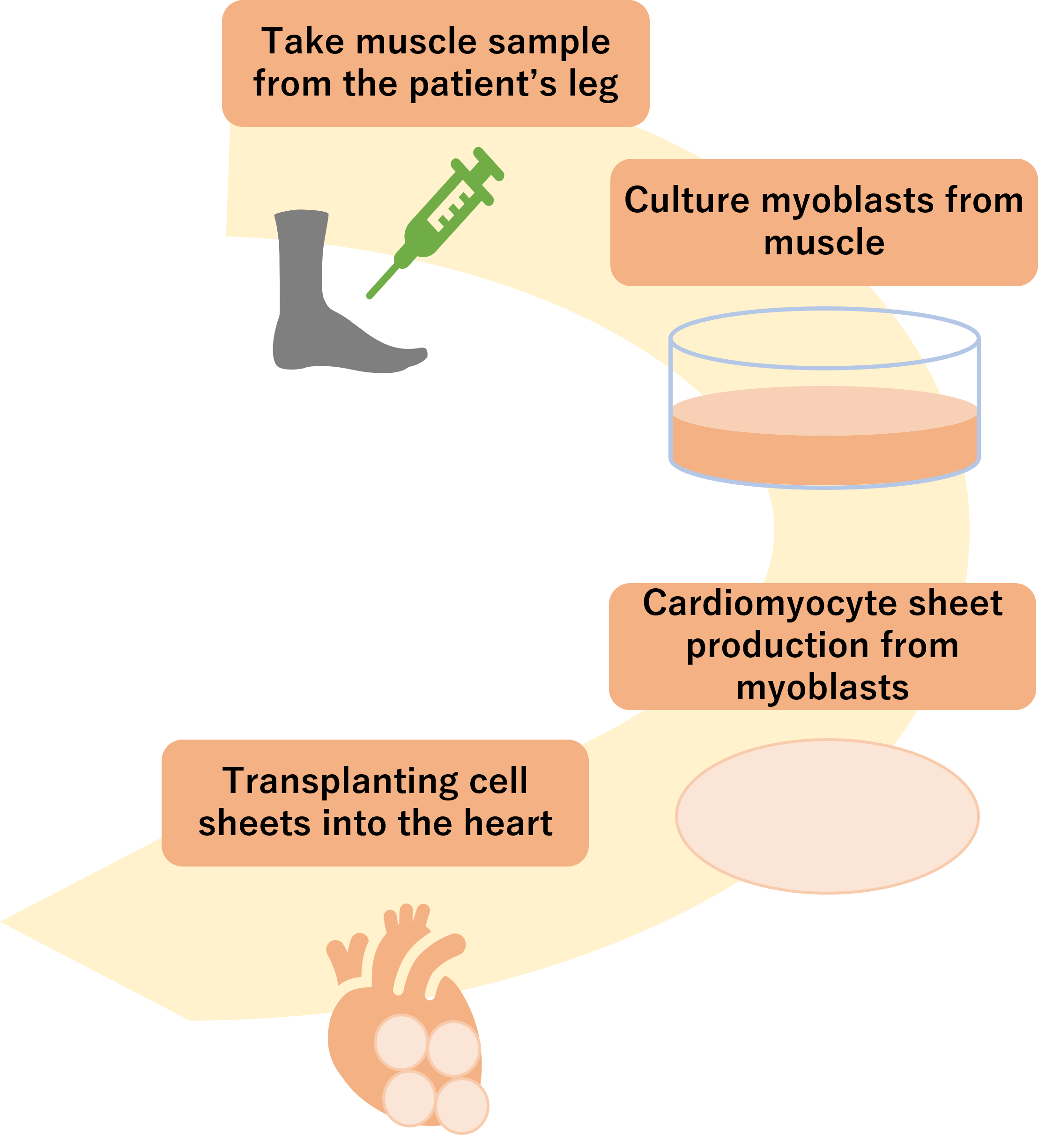Where will iPS cells be used?
We have seen what ES cells, iPS cells, and Muse cells are used for in regenerative medicine, but where are they actually used and how will they be used in the future?
We have seen what ES cells, iPS cells, and Muse cells are used for in regenerative medicine, but where are they actually used and how will they be used in the future?
Have you ever heard of Cardiomyocyte sheets? Cardiomyocyte sheets are expected to be a fundamental treatment for ischemic heart disease and heart failure, and recently in January 2020, the first Cardiomyocyte sheet made from iPS cells was transplanted into a patient. Professor Yoshiki Sawa, who developed the cardiomyocyte sheet, aims to put it to practical use in recent years. Myocardial sheets made from myoblasts, which are commonly used today, are made through the following process and transplanted into a patient's heart.

First, the patient's leg muscle is harvested and myoblasts are cultured. Myoblasts have the same structure as cardiomyocytes and have a high proliferative capacity, so they are used as a substitute for cardiomyocytes. The myoblasts are then formed into sheets to make myocardial sheets, which are cell sheets made of myoblasts. Several of these sheets are then attached to the patient's heart. Transplantation of these myoblast-derived cardiac muscle sheets has been performed on dozens of patients, and in each case, improvement in cardiac function was observed.
However, since myoblasts are not cardiomyocytes, myocardial sheets made from myoblasts are insufficient for the treatment of severe heart failure. Therefore, iPS cells, which can become various types of cells, have been attracting attention. iPS cells can be used to create myocardial sheets without the need to harvest myoblasts from the patient's muscles, and are expected to be able to treat severe heart failure.
